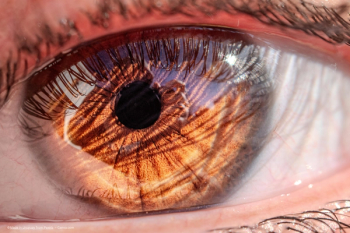
Sutureless trabeculectomy
In this article, the authors describe their novel technique for penetrative trabeculectomy in primary open-angle glaucoma patients, called sutureless trabeculectomy.
Glaucoma is the second most common cause of blindness worldwide affecting more than 67 million people.1,2 The prevalence of glaucoma is estimated to increase in the coming years owing to the ageing population reaching higher than 79.6 million by 2020.3,4
The major surgical interventions in management of open-angle glaucoma are described under the title of filtering surgeries. Although different techniques and modalities have been employed by surgeons but all share the same concept. The aim of penetrating surgeries is to create a connection between the anterior chamber and the subconjunctival space allowing fluid passage with less resistance. Trabeculectomy was first described in 1968 and later approved by the FDA.5 Since then many developments have been reported.
In conventional trabeculectomy, the sclera is exposed by a fornicial or limbal based conjunctival flap. A partial thickness scleral flap is prepared roughly 4x4 mm and half scleral thickness. Care must be taken to avoid corneal extension of the flap in the fornix-based approach to avoid leakage.
Application of topical MMC or 5FU antimetabolites reduces the incidence of failure in high risk patients. The potential side effects, that are increased with the use of these agents, must be considered and surgeons must be prepared for complications. These include hypotony, late leak and bleb related infections.
To prevent penetration of these toxic solutions, advancement into the anterior chamber is preceeded by meticulous washing with BSS. The anterior chamber is then entered by a scleral punch or stab knife.
Some surgeons advocate the use of a paracentesis into the anterior chamber before sclerostomy, with introduction of methylcellulose or air to allow gradual pressure reduction and better control on the anterior chamber. After creating a surgical peripheral iridectomy the scleral flap is sutured and conjunctival layer is sutured tightly assuring no potential for bleb leakage.
Introducing a new technique
In a recent article published in International Ophthalmology,6 we introduced a new technique for penetrative trabeculectomy in primary open-angle glaucoma patients called sutureless trabeculectomy.
First a fornix-based conjunctival flap was created approximately 50 degrees in the superior temporal quadrant. Using a crescent knife a tangential scleral tunnel was prepared 3 mm posterior to the limbus with a horizontal width of 3 mm and depth of one third of scleral thickness. The tunnel was advanced 0.5 mm anterior to the limbus then opened into the anterior chamber using a 3.2 mm keratome.
Before entering the anterior chamber through the scleral tunnel the anterior chamber was filled with methylcellulose through a peripheral paracentesis to prevent chamber collapse and trauma to the corneal endothelium and crystalline lens. The scleral punch was used to enlarge the entry point into the anterior chamber and to ease removal of the trabecular meshwork.
Standard surgical peripheral iridectomy was performed. The conjunctival flap was secured to the limbus preventing bleb leakage. The methylcellulose was removed using a double cannula and balanced salt solution.
Follow-up of the 26 patients receiving this new sutureless trabeculectomy was performed for one year. When we compared our results with those of the control group (receiving conventional trabeculectomy), we found that the new technique gave well controlled IOP measurements, which were similar to those of the controls. Mean IOP of 11.00 ± 1.3 mmHg in the conventional group and 12.4 ± 3.2 mmHg in the sutureless group.6 None of the patients encountered serious complications.
Newsletter
Get the essential updates shaping the future of pharma manufacturing and compliance—subscribe today to Pharmaceutical Technology and never miss a breakthrough.













































